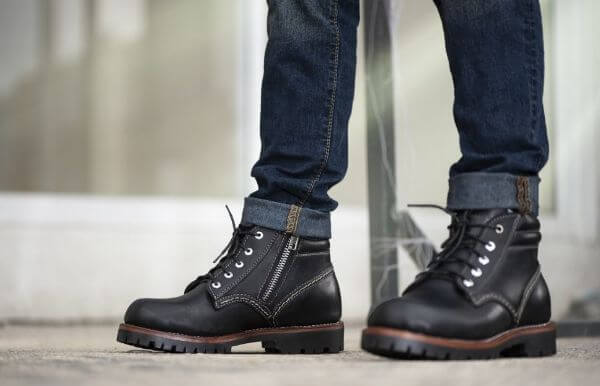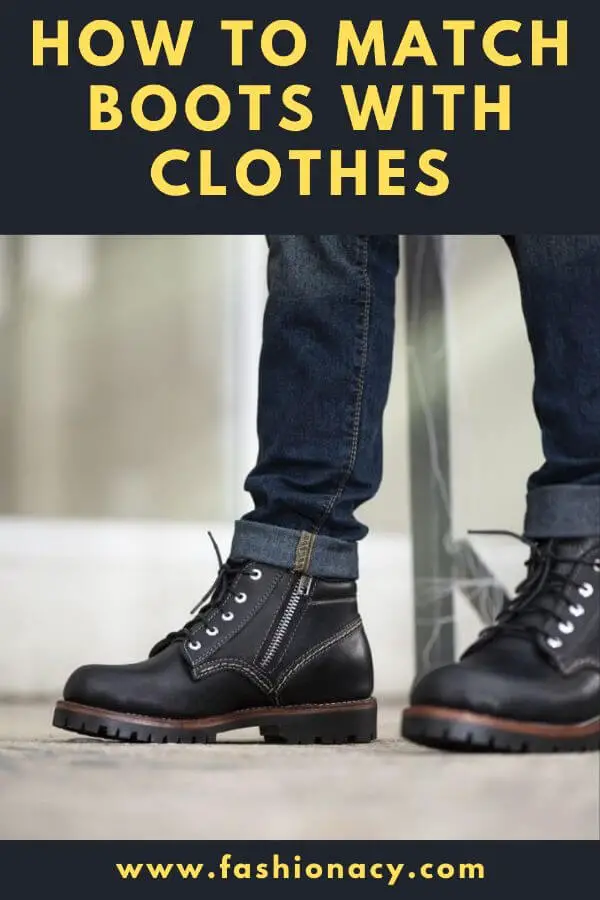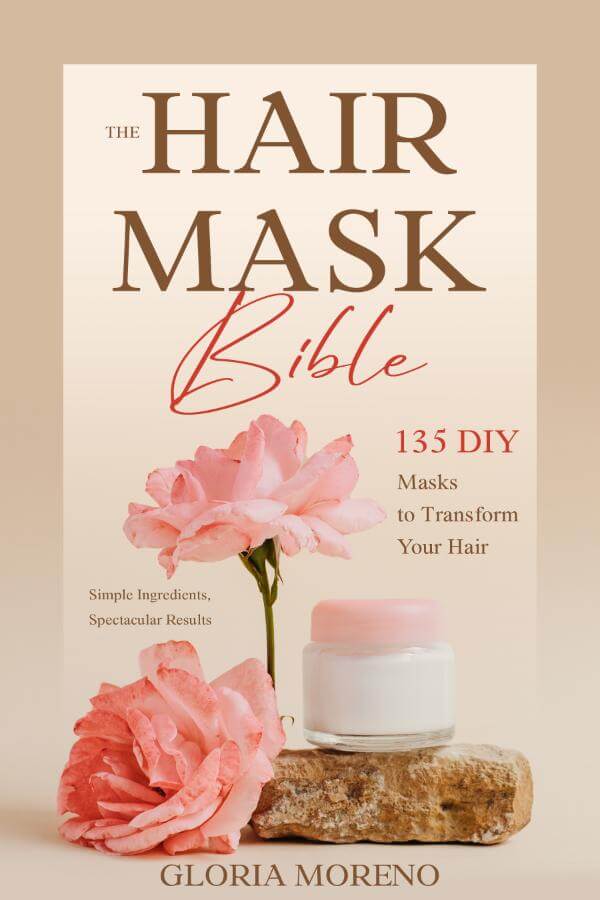
What comes to mind when you think of boots? How to match boots with clothes. Here are 7 rules to to keep in mind.
Know Your Options
When it comes to boots, you have a variety of options. The first rule is to be aware of your possibilities. Know what you have at your disposal.
When it comes to boots, keep in mind that there are a plethora of choices.
First up, a simple black laced boot. It’s practical. This will work with a wide range of different outfits.
I’m sure a lot of guys will default to this, and there’s nothing wrong with that. This is a terrific foundation boot, especially if you already have black shoes in your closet.
But, let’s imagine you don’t like black shoes and want to wear something a little more exciting.
Start browsing around; there are a plethora of alternatives.
The first option is to alter the color scheme. You might already own boots in a specific style, but do you have them in a variety of colors?
Don’t be hesitant to use a variety of colors, especially if they’re made of different materials.
When I say different materials, I’m referring to different kinds of leather derived from various animals. You can even check at different leather cuts, such as suede.
Consider altering up some of the stylistic details as well. A cap toe, for example. A little feature adds a touch of casualness to the boot, but it also draws attention. It’s a nice minor feature to add to a pair of boots.
The chukka, or classic desert boot, is the next alternative. This is a traditional boot with a terrific style that you can dress up or down. I could dress this down with a pair of dark indigo jeans and the texture in the suede would look fantastic.
You might also use a bright hue, such as blue suede.
Following that, we have the traditional Chelsea in black. What I like about it is that you can dress it up or down. In inclement weather, I can pair this with a suit. With a pair of jeans, I could even dress this down.
Chelseas are fantastic. They’re adaptable; you can slip them on and off when going through security, and they’re a terrific style to know.
Broguing, which is when they carve little holes into the leather, will be another style option. It has a rich history, yet it is undeniably beautiful. It usually raises the price of the footwear while also making it more casual.
The moccasin boot is another practical style. What makes a moccasin boot practical?
Because it all boils down to personal preference. When you consider the size and shape of a moccasin boot’s toe box, you’ll notice that it’s more forgiving than many other boots.
If your feet don’t fit into your boots, a moccasin style can be a good alternative.
Furthermore, because we don’t have a heel, we have a larger surface area that will contact the ground.
What if you wish to emulate a rock star’s appearance? Then, pick a pair of boots that demand attention or are a little more understated, but their style sets them different.
Something with a distinct appearance. Something with a buckle and a strap around it.
Understand Proportion
Understanding proportion is the second basic rule you must master.
Large-proportioned boots, for example. You won’t want to wear them with anything that fits you too tightly around the body.
This is not a smart mix if you’re planning to wear thin or skinny jeans with boots like this.
Understand that if you’re wearing delicate footwear, you can dress in more delicate clothing.
There are delicate boots and boots with a very streamlined shape that are nonetheless considered basic. Perhaps a little more formal boots in the Chelsea.
When you’re wearing anything clunky, though, you should pair it with larger things.
Boots Are Casual
The third point is to remember that all boots are casual by definition, so treat them as such.
If you want to dress up and wear a tuxedo or a suit, you should know that Oxfords are the footwear of choice.
However, if the weather calls for it and you truly want to wear boots, you can pull off a pair of black Celseas with a suit.
I’m not saying you can’t do it, but in general, this is something you’ll want to be cautious about.
Keep an Eye on Your Jeans
The next thing to remember when wearing boots is to make sure they have a decent supporting cast, especially the jeans.
You want to make sure that the taper, cut, and style of your jeans, whether they’re jeans or odd trousers, are compatible with the boots you buy.
Jeans that look good with one pair of boots may not look good with another pair.
It could just be a matter of height. If you’re wearing slim-fit jeans, you might find that they don’t work with this.
Color & Material
The third rule is to recognize that the color of the boots, as well as the material from which they are constructed, will influence the formality.
All boots are casual in general, although black boots are dressier than lighter-colored boots. Why? Because black is a more formal color.
Darker colors are more formal in general.
Match Boots to Other Leathers
This is a simple rule to follow. Match your leathers with your leathers.
So, if you’re going to go with black, make sure your belt, watch strap, and boot are all black. It’s a snap to pair things up and put them together.
What if you go with a pair of boots that don’t match, or you go with suede, or you go with a pair of bold boots?
Don’t be concerned. As long as you acquire something similar or are comfortable with the combination.
However, if you’re a more sophisticated user, you may toss all of that out the window and put together whatever you want.

Take Care of Your Boots
The final rule is to protect your investment, which is something that very few men actually do.
When you buy boots, you should also buy some polish and a boot brush.
After using the boots, you should clean them down, brush them, and remove any dirt. Why? You don’t want the salt to get into the leather and dry it out.
You want to remove and you want to apply the polish.
Why? A layer of polish, such as wax, will protect your boots from the elements and help them last longer.
Are you undecided on the hue to choose? Then, find a neutral polish. There are also a plethora of other solutions available.
If you want to condition your boots, you can use a conditioner to penetrate the leather and keep it soft and supple. If you wear the boots every day, you only have to do it once a month; if you don’t, you’ll have to do it every few months or even once a season.
Look at a snow seal if you’re worried about walking through a lot of slush in the snow. Take a look at something that will genuinely protect the boots.
When water enters the boots, it does not harm them; nevertheless, when it exits, it draws moisture out. That’s when the boots are damaged.
If you’re going to use a material, test a small amount on the back of the boot or the inside tongue to make sure it won’t discolor the boots.
If you’re concerned about light-colored leathers darkening, look for silicone sprays. There are products available that will not penetrate the leather but will provide a protective coating to keep the elements at bay.
3 Mistakes
Overpaying For Crappy Boots
The first error is overpaying for bad boots.
How can you tell whether a pair of boots is of poor quality? Because they’re glued together the most of the time.
There are certain glued boots out there that make sense due of the construction and the direction they’re taking with the shoe’s design.
However, the great majority of high-quality shoes will be sewn together. They’re planning to utilize a Goodyear welt and a Blake stitch on these.
There is a distinction in the design. However, if you see either of these types of boots, you can rest assured that you’re getting a well-made, high-quality footwear.
Why? Because it is significantly more expensive and allows the shoe to be resoled.
Buying Inferior Material
The second blunder is purchasing a pair of boots with a lower-quality upper material.
If it’s not leather, and it’s made of a synthetic substance, you should exercise extreme caution. They won’t be as breathable as leather and won’t be able to withstand the same amount of wear and tear.
You should also make sure you’re obtaining grade 1 leather.

There is a distinction between grades one, two, three, and four.
If you ever come across boots that state they’re made from grade 3 or 4, stay away from them. It all boils down to the ability to absorb and repel water.
Grades 3 and 4, as well as grade 2, don’t do a particularly good job of naturally repelling water. When it comes to leather, here is why you should get grade 1 boots.
Not Paying Attention to The Sole
The last mistake to avoid when purchasing boots is failing to pay attention to the sole.
Many people will argue that high-quality boots require a leather sole. No, not at all. It is dependent on the boot’s function.
I’m looking for a pair of combat boots with a rubber sole. That will have traction and will be able to accomplish its job, which is to provide support when I’m hiking or walking through the mud.
If I’m buying a pair of dress boots or cross-functional boots, I want something with traction as well as a leather sole. This will be a sign of excellence in general.
If I want a really classy boot but don’t care too much about traction, I’ll opt with the straight leather sole.
Leather soles are frequently an indicator of high quality. Why? Because they are more expensive and take a little longer to create and construct.



